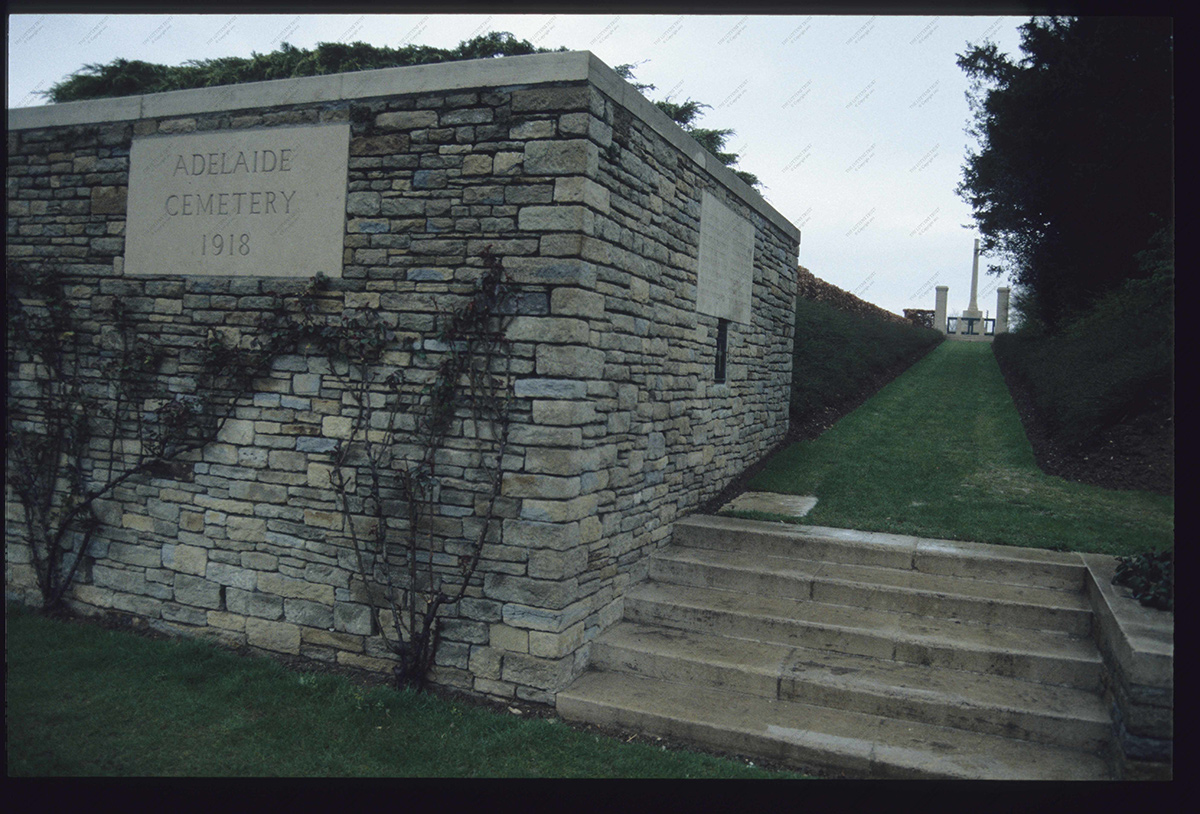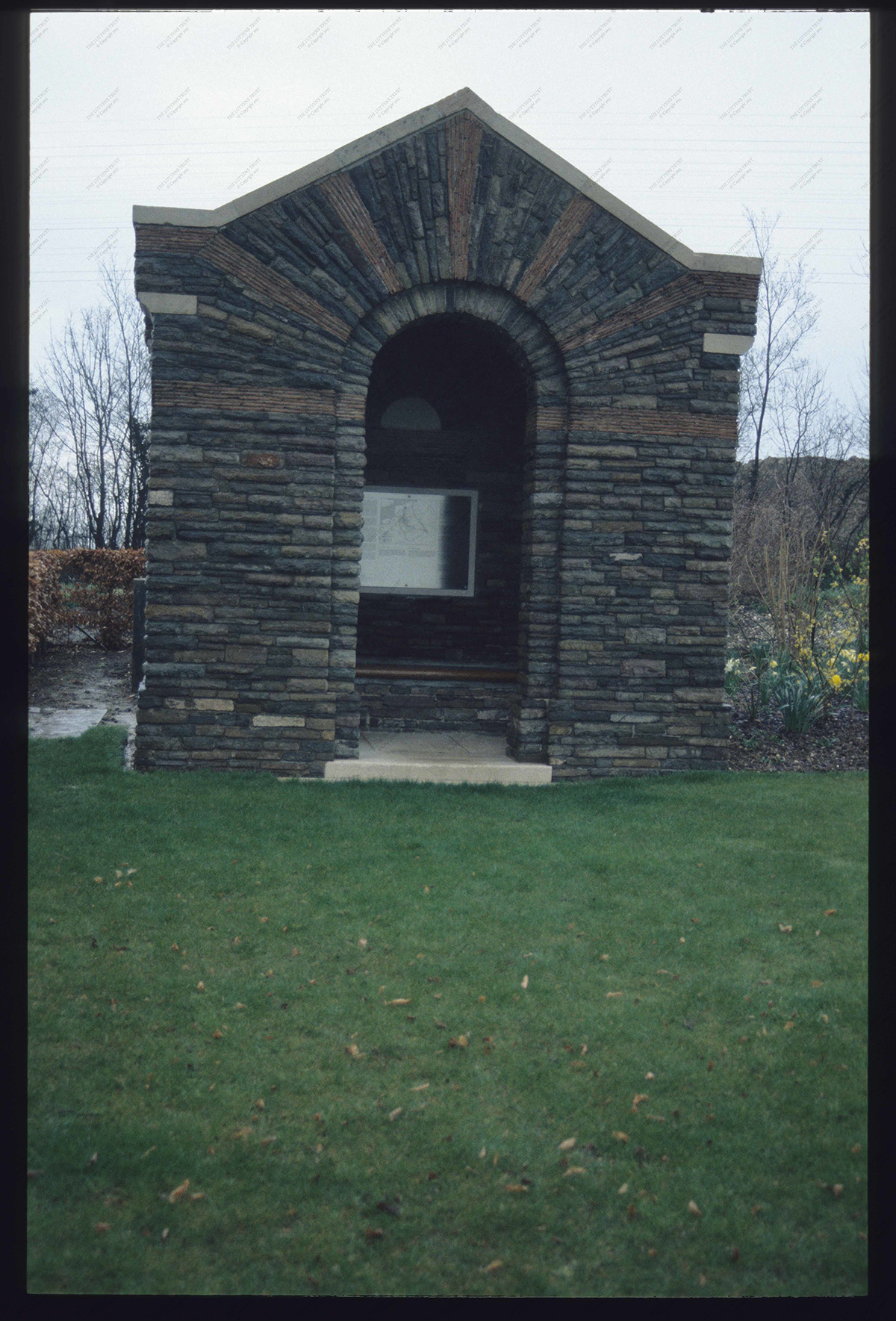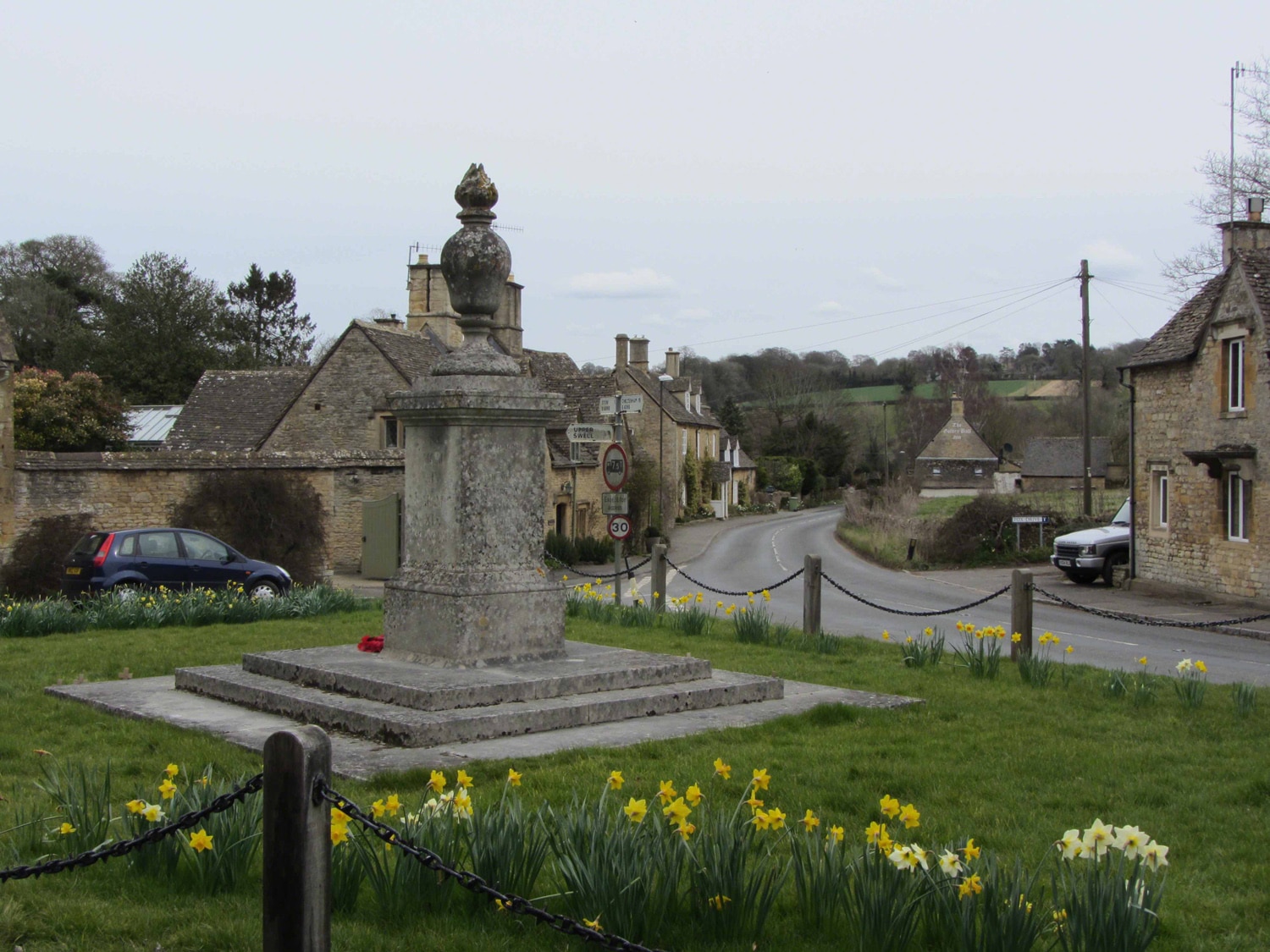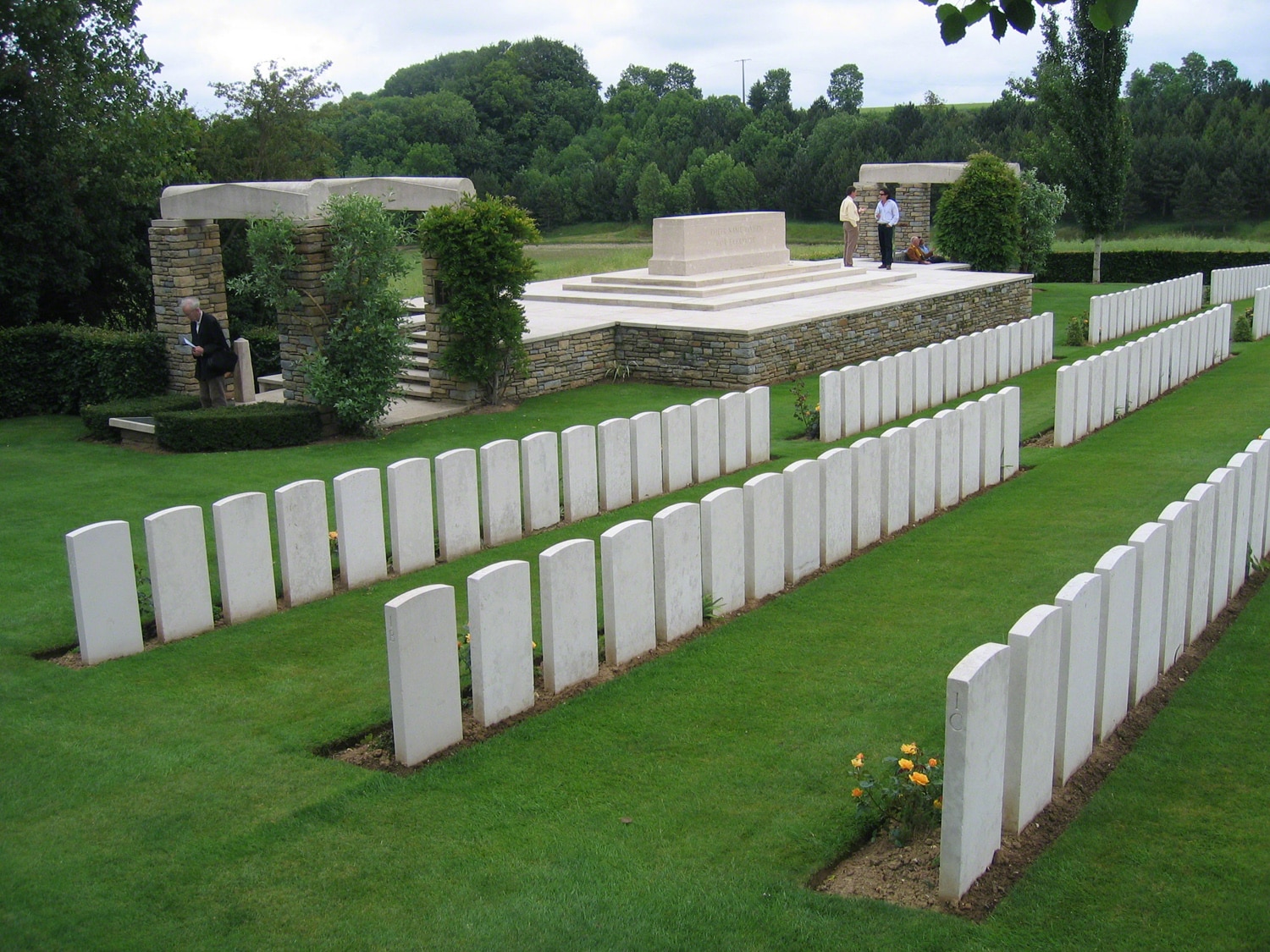
Description
The cemetery lies on the road from Amiens to St. Quentin, on the west side of the village of Villers-Bretonneux. The village became famous in 1918 when the German advance to Amiens was halted by Australian divisions. Originally there were ninety graves. After the Armistice, a large number of graves were transferred from smaller cemeteries and isolated graves around Villers-Bretonneux.The cemetery lies higher than the road, behind an old quarry, and can be reached by an ascending path, originally a ramp with long steps. From the road, only the Cross of Sacrifice is visible at the end of the path. There is a short stairway on the road, between two plant beds of which the left one is at the same height as the higher ground of the cemetery, marking the entrance as a large block-shaped volume. At the top of the slope, a second entrance is indicated by two gate pillars, a solution that was often applied by Lutyens and Goldsmith as in Monchy British Cemetery. Originally there were two posts between the pillars.
The field with graves has a frontal area with the Cross of Sacrifice and the War Stone on the east side on a platform with several steps. The front part of the field contains the graves dating from before the Armistice, and the back part the later graves. At the end of the entrance axis there is a small shelter similar to the one applied in Esquelbecq Military Cemetery (assistant architect Hutton). The same type is also situated at Abeele Aerodrome Military Cemetery by Goldsmith and at Guards’ Cemetery, Windy Corner, by the architects Holden and Von Berg. However, the architecture is strongly related to the gateways in the gardens by Lutyens, such as Orchards in England and Le Bois des Moutiers in Normandy. A characteristic feature is the application of cemented tiles that have been placed around the opening in radial form. The building is not shown on the plan of the IWGC and was added later by the assistant architect Cowlishaw.
The greenery in the cemetery is rather sober at the moment. There are a few smaller trees. In front of the War Stone there are two plant beds in which pillar-shaped yew trees originally stood. The cemetery is surrounded by a hedge that connects to the plant bed at the road, which is filled with yew and also accommodates a climbing rose. (Geurst, 2010, p.190)
Bibliography
Geurst, J. (2010) Cemeteries of the Great War by Sir Edwin Lutyens. Rotterdam: 010 Publishers.Also Cited In
Butler, A., 1950. The architecture of Sir Edwin Lutyens: the Lutyens memorial series. Vol III: Town and Public Buildings: Memorials: The Metropolitan Cathedral, Liverpool, Country Life: London and Scibners: New York.Listing Grade
Coming soonListing Reference
Client
Imperial War Graves Commission



